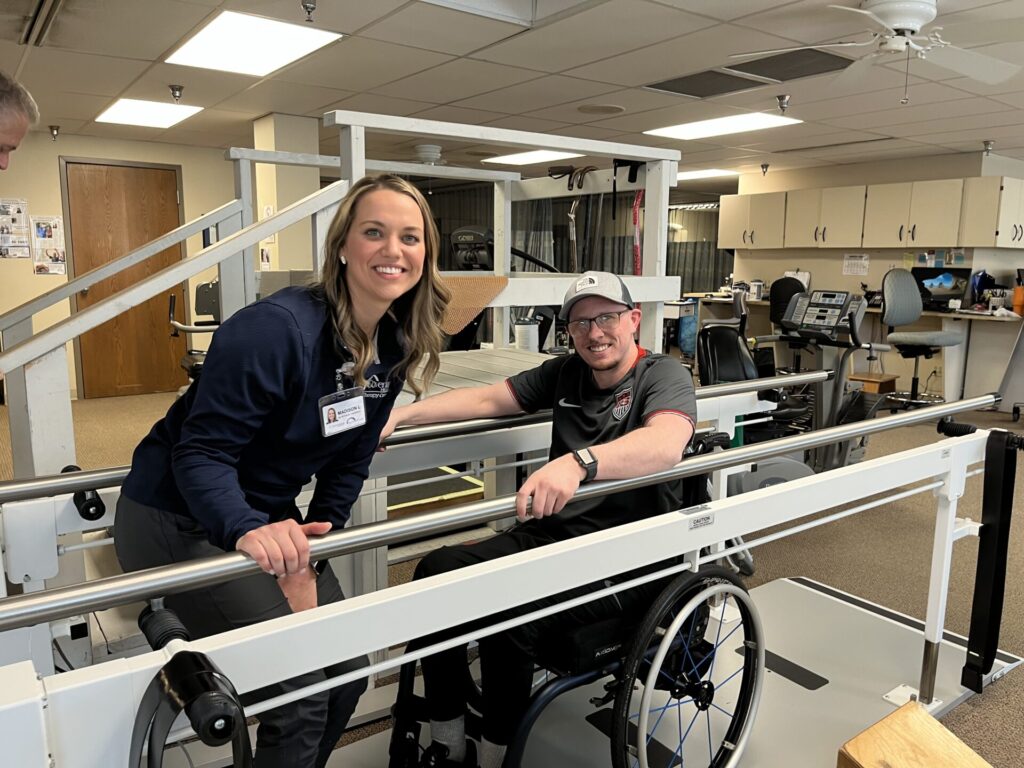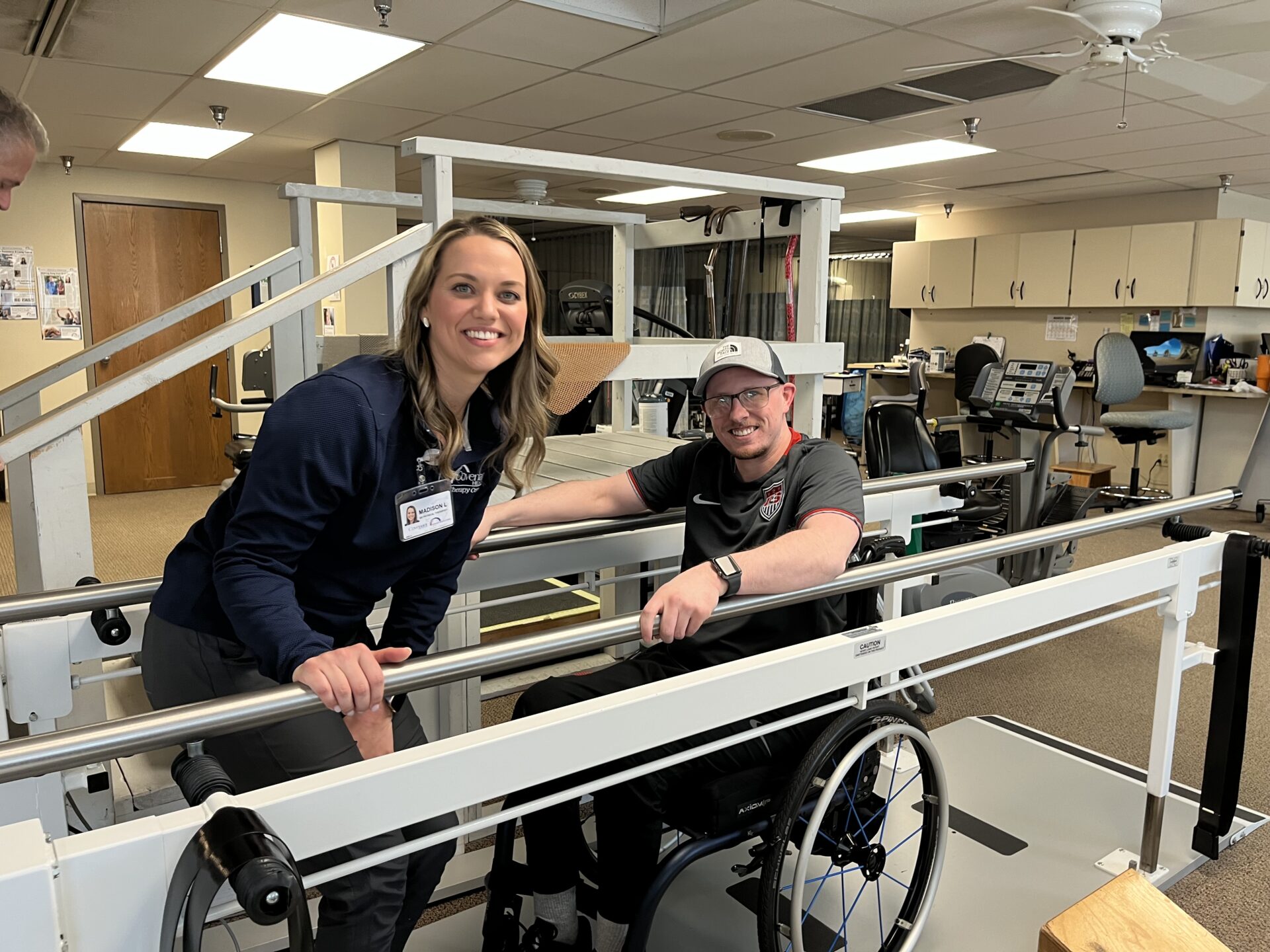- Find a DoctorDoctors by Specialty
- Cardiac Electrophysiology
- Cardiology
- Colon & Rectal Surgery
- Family Medicine
- Gastroenterology
- General & Vascular Surgery
- Gynecological Oncology
- Gynecology
- Infectious Disease
- Internal Medicine
- Interventional Cardiology
- Interventional Radiology
- Nephrology
- Neurology
- Neurosurgery
- Obstetrics & Gynecology
- Oncology
- Oncology & Hematology
- Orthopedic Surgery
- Otolaryngology
- Perinatology
- Psychiatry
- Pulmonary Medicine
- Radiation Oncology
- Rheumatology
- Sleep Medicine
- Thoracic Surgery
- Urology
- View All Doctors
- Our ServicesMedical Services
- Bariatric Services
- Behavioral & Mental Health
- Breast Care
- Cancer Care
- Critical Care
- Ear, Nose, & Throat
- Emergency Services
- Gastroenterology
- Glossary
- Heart Care
- Home Care
- Hospice & Palliative Care
- Imaging & Diagnostics
- Long-Term Care
- Nephrology
- Orthopedics
- Primary Care
- Rehabilitation Therapies
- Robotic-Assisted Surgery
- Sleep Services
- Spine Care
- Stroke Care
- Surgery Services
- Telehealth Services
- Urology
- Urgent Care
- Virtual Urgent Care
- Women’s Services
- Wound Care
- Our Locations
- Patients & Visitors
- About Us
First Ones There, Last to Leave
It’s been a long time since Scott Byrd stepped out onto the baseball field at Jefferson County High School as a player. Yet, he still steps on high school athletic fields every day in Sevier County. As the coordinator of LeConte Sports Medicine, Byrd oversees certified athletic trainers at every Sevier and Cocke County high schools, giving our players and coaches an invaluable resource and a leg up in a competitive sport. But he doesn’t do it for the wins, even though he admits all teams want to win. Byrd does it because he knows sports are about being part of something bigger than yourself, being part of a team. And that team works best when players are healthy.
Not just ankle tapers
“People don’t realize what all goes into this,” says Byrd, “a lot of times athletic trainers are the first people there when a student is injured, and we are also the last ones to see that athlete before he or she returns to the field. It’s quite a thing to witness.”
LeConte’s team of athletic trainers do tape ankles and provide advice on hydration, but there is so much more to the job. Most of it is about injury prevention.
Their day begins bright and early, well before the coaches or the athletes arrive. “Student-athletes may need pre-practice treatment to help with flexibility and healing from injuries,” Byrd reminds us. “If we see a weakness, we will try to help strengthen it, whether that be with weight room advice, finding the proper brace, or improving range of motion.”
Once practice starts, trainers are responsible for checking the heat index, and stopping or modifying practice if it gets too hot. Being fluent in the Tennessee Secondary Schools Athletic Association’s (TSSAA’s) safety guidelines is a key responsibility, and it’s a huge one. The guidelines let you know how long you can practice, what equipment you need to wear at what temperatures, and more. If you break those rules, you could get your entire school into trouble, but more importantly, you put students at risk of injury.
A quality relationship between the trainer and the coach is key. A coach really needs to know he or she can trust the trainer, and in return, the trainer helps the coach focus on practice and the game. Any school that has an athletic trainer has an advantage.
“Coaches often have to play multiple roles,” Byrd tells us. “Many times they are the ones doing the laundry, the schedule, the coaching, looking out for safety and water stations. A trainer allows coaches to focus on just coaching instead of everything else.”
Gatlinburg-Pittman head coach Derek Rang agrees. “We wouldn’t be able to get as much into our practice time as we do now if it wasn’t for Scott. It really gives us a huge leg up.”
Sometimes a trainer offers guidance on proper technique and adjusting a position in a drill. Good form is key, and coaches and trainers must work together to ensure that occurs.
When Injuries Happen
“Five minutes. That’s the amount of time we have to get an injured athlete evaluated and treatment started,” says Byrd. In fact, research shows that if you can reach them that quickly, athletes have a much better chance at healing properly, and returning to play faster.
Most of us have probably been at a football game when a player went down. The stadium holds their breath, and a game that was full of cheering moments before suddenly becomes eerily silent. This is when Scott and his team go to work.
LeConte’s athletic trainers are highly skilled at what they do. Each one has to have a four-year degree from an accredited school, then they must pass a national board certification exam and hold a Tennessee state medical license.
If a student goes down, certified trainers have a very complex evaluation system for assessing injuries, everything from a possible concussion to an ankle sprain. “Concussions are a hot topic right now in football,” Byrd says. “And they should be. Parents need to know that it’s not necessarily that we are seeing more concussions now than we did 20 years ago, but instead, we have a heightened awareness and thus we are giving more evaluations for it. We’re catching them more often, and starting proper treatment earlier.”
The knowledge is paying off. In 1999, before Sevier County and LeConte began the athletic trainer program, the re-injury rate of students in the county was just over 25%. That means, if a student was injured, there was a one in four chance that the same student would suffer an injury again. Since starting the athletic trainer program, Sevier County’s re-injury rate has dropped to a record low of less than 1%.
Any coach would be happy with those statistics. Trainers keep our kids playing instead of on the sidelines.
What if it were your kid?
One of the biggest questions Scott Byrd hears from parents is “what if it were your kid? Would you allow your child to play football with the risk of injury?”
Being a father of three small boys, Scott can answer honestly. “Sometimes, I feel it’s good for kids to be part of something bigger. Yes, there are risks, but kids get discipline on a team, as well as networking and contributing. There are a lot of lessons that follow them through life.”
He also gives great advice. Make sure your child’s coaches are knowledgeable and following TSSAA safety guidelines. You should be hearing them talk about proper techniques to avoid injuries, and they should be allowing water breaks.
It’s also a good idea to start with a camp to see if your child is really as interested in the sport as they think they are. “Sometimes, kids will go to a football camp and absolutely fall in love with the sport,” advises Byrd, “but other times a kid may decide ‘maybe that’s not for me,’ and that’s okay too.”
He also cautions against over-training too young. According to Scott, “there is a trend now of young kids, elementary aged kids, only focusing on one sport year-round. However, data is showing that trying more than one sport is actually more beneficial.”
In the end, Byrd strongly feels that allowing kids to experience athletics is a good thing. He’s seen shy kids who would barely talk their freshman year connect with team-mates and become a chatter-box by their senior year. That happens even if they never score a touch-down. They are all part of that team, and they all contribute something.
“How would I handle it if it were my kid?” asks Scott. “All these kids are my kid.”
The Legacy Continues
“In my early years at GPHS, I had a student who injured her knee playing softball,” says Byrd. That event brought back a flood of emotion. Byrd suffered a very similar injury when he was in high school, an injury that changed his entire life. As a baseball player at Jefferson County, he had high hopes of playing in college and beyond one day.
His injury set him back, but not for long. They didn’t have athletic trainers at his school at that time, but working with doctors helped him get back on the field, and back in the game. He did play in college, and eventually decided he wanted to help others.
So, when his softball player went down, Scott knew exactly what she was feeling.
That player recovered, went to college, and now has returned to work under Scott as one of LeConte’s certified athletic trainers. The circle continues.
“It’s all very rewarding,” says Byrd. “Yes, we see injuries, but we also see our kids recover and walk back out on that field again. It’s all about the kids. They are what drives us. They drive me.”
Find out more about LeConte’s athletic trainer program here. at LeConteMedicalCenter.com/SportsMed
Need to find a doctor for a physical before starting a youth sports program? You can find one by vising our physicians’ directory.
























